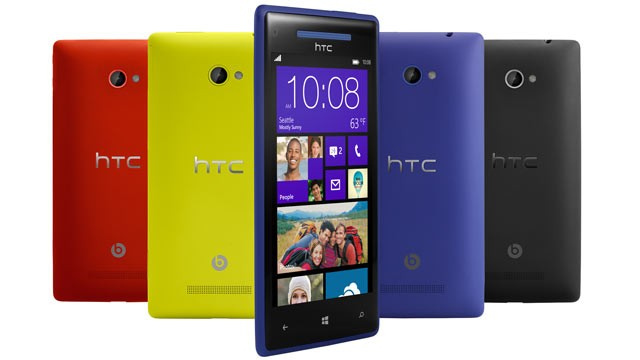It’s often the bane of the international traveler’s existence, the thorn in his/her side, the unscratchable itch. It’s the dreaded international data charge! These days, humanity is more connected than ever, with smart phones and tablets being more of an appendage than an accessory. The long storied problem with staying connected on international travel is quite simply, the exorbitant cost.
Data roaming charges can easily leave you facing a four-figured cell phone bill upon returning from your travels. And, while times are changing in the mobile industry, you can still very easily “buttonhook” yourself if you don’t go in prepared.
In this entry, I’m going to discuss some of the ways that we’ve had the best success with staying connected during travel, and how we’ve managed to keep the costs at an affordable level.
First, let’s talk about why you would need to be connected abroad. Some of you may be thinking, shouldn’t vacation be a time when you unplug, exhale, and recharge? In a word, ABSOLUTELY! But, there are reasons that still having some access to the worldwide web can make your travels much more streamlined. I’m going to quickly delve into a few reasons why having mobile access abroad is a GOOD THING. Those reasons are:
- Navigation – If you travel like we do, we often travel on our own via train, rented car, or on foot. Having access to a bit of mobile data can be major when it comes to the efficiency of your trip. Being able to access a mapping or transit app on your phone can save tons of time over wandering around lost or aimless.
- Emergencies – You never know what you’ll encounter during your next adventure or what may happen with friends and family while you’re away. While an emergency situation would warrant contact no matter what the cost, not having the added stress of a giant phone bill in addition to the emergency only helps the situation.
- Research – This again relates to traveling on your own. As our train approaches its next stop, or as we come over a mountain pass and happen upon a small town in our rental, it’s really handy to have a web browser to perform a quick search to decide whether or not the town is worth the stop.
While we’re definitely advocates of leaving social media, email, and work behind for your adventure, we certainly see some benefits to having a usable phone that won’t cost you an arm and a leg to utilize. That said, let’s discuss a few of the ways that you can stay connected and avoid those unbearable international roaming charges.
First, the key to being able to connect overseas at all is having a global capable phone that is unlocked by your U.S. mobile provider. To confirm that you have a global phone that is in an unlocked state, contact your mobile provider.
Types of SIM Cards
- Local SIM Cards – Often, the cheapest way to connect abroad is to connect like a local. Most countries (especially in Europe) have mobile providers with prepaid mobile plans. In Europe, Vodafone and T-Mobile are basically everywhere at this point. You can simply walk in to a local carrier’s store, check out plan options, by a prepaid plan, and insert the local SIM card in your unlocked global phone. There are a couple of major keys here. 1) Don’t lose your U.S. SIM card. Make sure to put it in a safe place, so that you can replace it when you’re back stateside. 2) Make sure that you know what plan you’re purchasing, and that it will be enough to get you through your trip. As an example, our last trip to Ireland was 10 days long, and we were driving on our own in a rental. We purchased a Tesco Mobile prepaid SIM card for the equivalent of about $20 USD. This SIM card included 2GB of data to be used anywhere in Ireland and unlimited calls and texts within Ireland. That was more than enough to get us by. We just made sure to shut our data off when not in use.
- Global SIM Cards – Our next trip will take us through 5 countries. This would mean purchasing 5 different SIM cards to avoid roaming charges in Europe. In this case, we’ve opted to utilize a Europe SIM card by Mobal. This card is $60 per month for 1GB of data, but it works all over Europe. Additional GB of data are $10 each. While this isn’t as good of a deal as the Irish SIM card, the fact that it works in every country that we’re traveling to makes it a more convenient and better deal than buying 5 different SIM cards. There are various companies offering Global SIMs at varying rates. Check out options like Mobal, OneSIM, etc., and find what works best for you. These SIMs work in the same way at the local SIMs. Simply swap them out for your U.S. SIM card, restart your phone, and you’re good to go. Do be aware that when you change SIM cards, you also change your phone number, leaving your U.S. number suspended while you travel.
- Carrier SIM Cards – As the U.S. mobile phone market competition heats up, using your existing U.S. plan is becoming more and more of an option each day. Companies like T-Mobile are already offering unlimited international data in many countries. Sprint has free use in many Caribbean countries, and Verizon in Canada and Mexico. Additionally, Verizon is offering daily international passes for $10 per day. This allows you to use your existing U.S. package for only $10 per day, with no additional roaming fees. For short trips, this can be an affordable an convenient option. My warning with these plans is to just be sure of the details and fine print. We tested T-Mobile’s unlimited international data last year, and while it was unlimited, the speeds were restricted to 2G, which in many locations was unusable.
I often see social media posts and online advice to simply put your phone in airplane mode when you leave the states. While that is an option, there are definitely some better options out there to stay connected while you wander. Choose carefully, as there’s not a one size fits all option. Just be prepared, and you can have the peace of mind of staying plugged in abroad.


Recent Comments